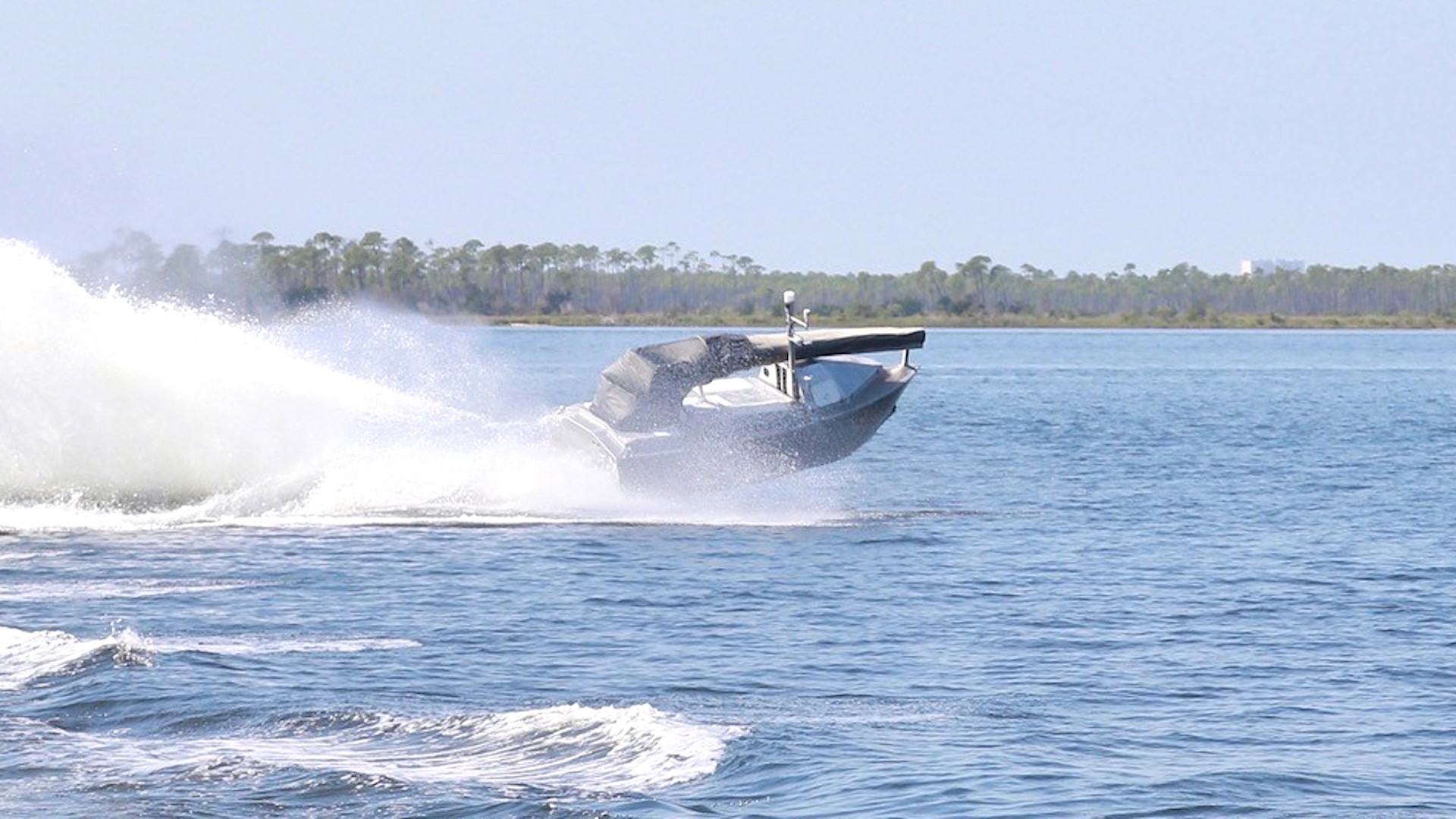

The Navy is asking lawmakers to fund an experiment that would see the service slap surface-to-air missiles onto unmanned surface vessels (USVs) as a potential future defense for military transport ships underway, according to the service’s latest budget request.
News of the proposed system, referred to in the Navy’s fiscal year 2024 budget request as the “Multi-domain Area Denial from Small-USV (MADS),” was first reported by our colleagues at The War Zone.
According to Navy budget documents, the MADS will consist of a Greenough Advanced Rescue Craft (GARC) drone boat outfitted with FIM-92 Stinger missile launchers to potentially “provide a low-cost, persistent anti-air and anti-surface maritime defense capability” for transportation vessels associated with Military Sealift Command, littoral operations, or even Expeditionary Advanced Base Operations (EABO) that the Marine Corps sees as critical to future distributed ops.
Developed by Maryland’s Maritime Applied Physics Corporation (MAPC), the GARC itself is just under 16 feet long and boasts a top speed of 35 knots and a 1,000-pound payload capacity, according to company specs. MAPC’s fact sheet on the system indicates that the GARC’s surface warfare package currently consists of a remote weapons system which includes the Navy’s Mk 50 Gun Weapon System, the .50 caliber GAU-19 rotary barrel machine gun, and AGM-176 Griffin or AGM-114 Hellfire missiles.
Subscribe to Task & Purpose Today. Get the latest military news, entertainment, and gear in your inbox daily.
The War Zone notes that the Navy has experimented with variants of the GARC since at least 2018 as both a communications platform and potential escort and counterterrorism watercraft. The new proposed experiment for fiscal year 2024 would see the Navy integrate an “existing weapons platform” and associated systems into a new concept of operations that will eventually see validation “through live-fire engagement of target drones and small boats,” according to Navy budget documents.
The end goal of MADS is, of course, a numbers game. “During future conflicts, U.S. and allied forces will be greatly outnumbered by peer or near-peer competitors in both tactical platforms and munitions,” according to Navy budget documents. “Large numbers of small, low signature, attributable unmanned missile launching vessels have the potential to improve surface force magazine depth and reduce risk to force in denied areas.”
The Navy has been experimenting with USVs since 2018 when the service deployed the 132-foot-long submarine-hunting Sea Hunter to join the fleet after nearly eight years in development with the Defense Advanced Research Projects Agency. Indeed, the commander of the U.S. 5th Fleet recently stated that the U.S. and its allies wanted to see a 100-strong force of drone ships backing up crewed Navy warships in the waters around the Middle East as soon as 2023.
While the service has aggressively explored applications for USVs such as communications and sensor nodes, examples of armed drone boats are few and far between. In 2019, for example, the Navy showed off a Textron Systems-produced Expeditionary Warfare USV armed with a .50 caliber machine gun and Hellfire missile system during testing at the Naval Surface Warfare Center Dahlgren Division in Virginia. The following year, Textron demonstrated its Common Unmanned Surface Vehicle (CUSV) armed with just a .50 cal as an added harbor security and force protection asset at Naval Station Norfolk.

The latest insight into the Navy’s armed drone boat capabilities came in April 2022, when the Defense Department announced that an $800 million security assistance package bound for Ukraine amid Russia’s invasion of the country would include an unspecified number of “unmanned coastal defense vessels” for the Ukrainian military, although the Pentagon declined to provide additional details regarding the nature of the systems and their capabilities.
Those unmanned vehicles are “designed to help Ukraine with its coastal defense needs,” as then-Pentagon spokesman John Kirby said in response to questions surrounding their armaments at the time. “And I think I’m just going to leave it at that. I’m not going to get into the specific capabilities, but they’re designed to help Ukraine with its coastal defense needs.”
Indeed, the ongoing conflict between Russia and Ukraine has only underscored the potential benefits of employing armed USVs against conventional targets at sea. In October, the Ukrainian military used a contingent of seven USVs loaded with explosive “kamikaze” payloads to attack vessels associated with Russia’s Black Sea Fleet in port in Sevastopol in the annexed Crimean peninsula, damaging several surface warships, as The War Zone reported at the time.
It’s unclear when the Navy’s dream of missile-hauling drone boats might become a reality: the proposed MADS experiment would be a new research start in fiscal year 2024 and the service is only requesting $5 million to start to fund the project, according to budget documents.
The latest on Task & Purpose
- No, the VA isn’t going to reduce your disability payments if you make too much money
- Air Force 1-star general relieved for ‘shortfalls’ in personal conduct
- What are America’s goals in Ukraine? It’s not totally clear
- Russia is dusting off ancient tanks as losses mount in Ukraine
- How the Battle of Nasiriyah foreshadowed the long slog of the Iraq War
